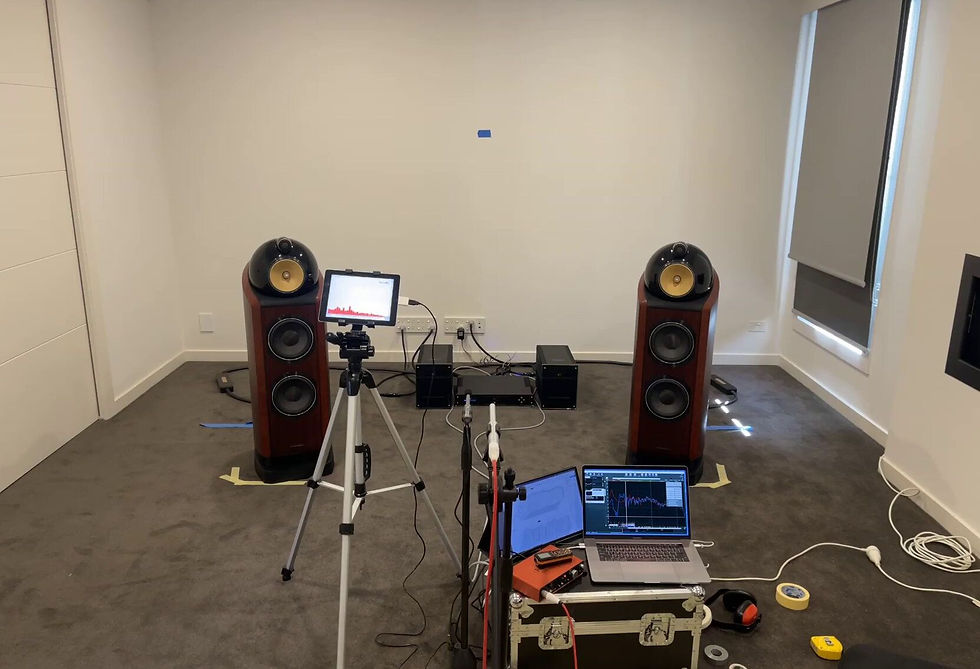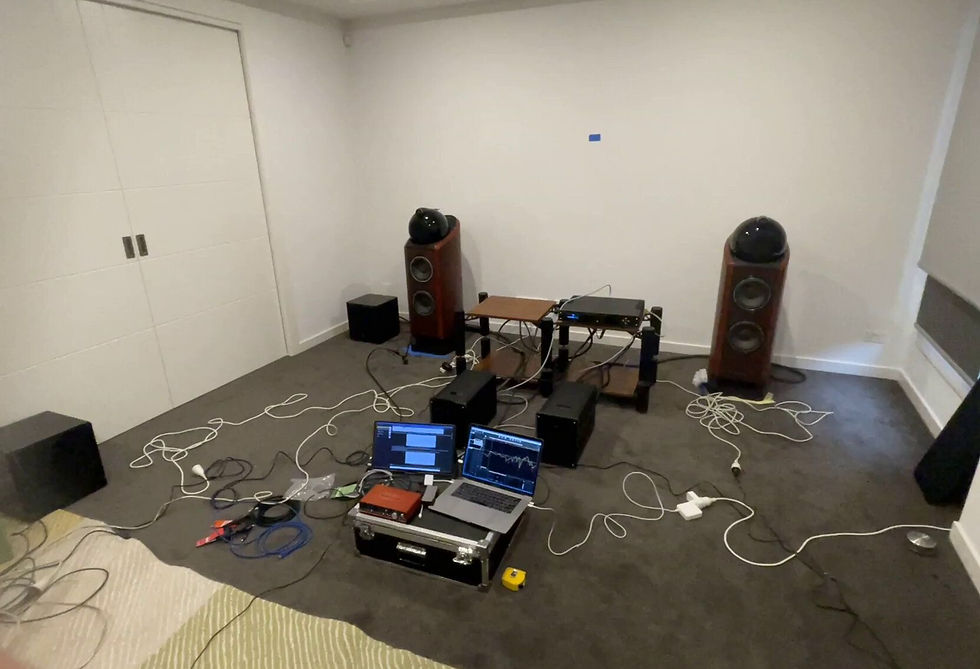Multi-Sub Setup for Project 2462 Sarone HiFi Listening Room
- cristiancorsini
- Oct 4, 2024
- 2 min read
Project Overview: The multi-sub setup for Project 2462 was designed to optimize the low-frequency response of a dedicated HiFi listening room. The aim was to address room modes and standing waves that are common in small to medium-sized rooms, which can lead to uneven bass response and detract from the listening experience. By employing multiple subwoofers, we were able to achieve a smoother bass distribution and eliminate problem areas, ensuring that the sound quality remains consistent throughout the entire space.
Watch our detailed Project 2462 Multi-Subwoofer Optimization on YouTube



Stage 1: Initial Setup and Calibration
We started with an initial setup of the primary speakers and two additional subwoofers in order to establish a baseline measurement. The first set of images shows the room prior to any acoustic treatment, with the necessary equipment laid out for detailed analysis. This setup included multiple microphones placed strategically to capture room response at various listening positions. During this stage, we measured the room’s natural acoustic characteristics using various software, setting a reference point for further tuning.
Stage 2: Multi-Sub Optimization
The next stage focused on the positioning of multiple subwoofers to minimize the effects of standing waves. We employed CORSINI'’s multi-sub methodology, strategically placing subwoofers at various room locations to excite subtract different room modes. These techniques reduce the prominence of individual resonances and provides a more even bass response. During this process, we used iterative measurements and adjustments to balance each sub’s contribution to the overall sound.
Stage 3: Final Tuning and Listening Tests
After optimizing the multi-sub configuration, we moved to the final tuning stage, where additional adjustments were made based on subjective listening tests. These tests allowed us to identify and address any remaining issues that the measurements might have overlooked, such as low-frequency localization or a lack of impact in certain areas. Finally, we conducted post-setup measurements to ensure that all objectives were met and the sound was balanced across the entire listening area.





The purple line, on the other hand, shows the end result after implementing speaker placement adjustments, subwoofer optimization, time alignment, polarity correction, and the use of parametric EQ filters. Additional room correction was applied to smoothen the response, followed by the application of a custom house curve tailored to the client’s preferences.
The final response is significantly more balanced, with a smooth transition from sub-bass to bass and a controlled mid-bass region, ensuring clarity and impactful low-end reproduction.
The room now offers a much more refined and enveloping listening experience, showcasing the value of a detailed and iterative acoustic setup process.
By leveraging a multi-subwoofer approach, Project 2462 achieved a cohesive low-end response, providing deep, controlled bass without overwhelming the room. This setup ensures that the listening experience is immersive and accurate, delivering the artist’s true intention.
For more information or to schedule an acoustic consultation, visit: Corsini Acoustic Solutions.

Comments